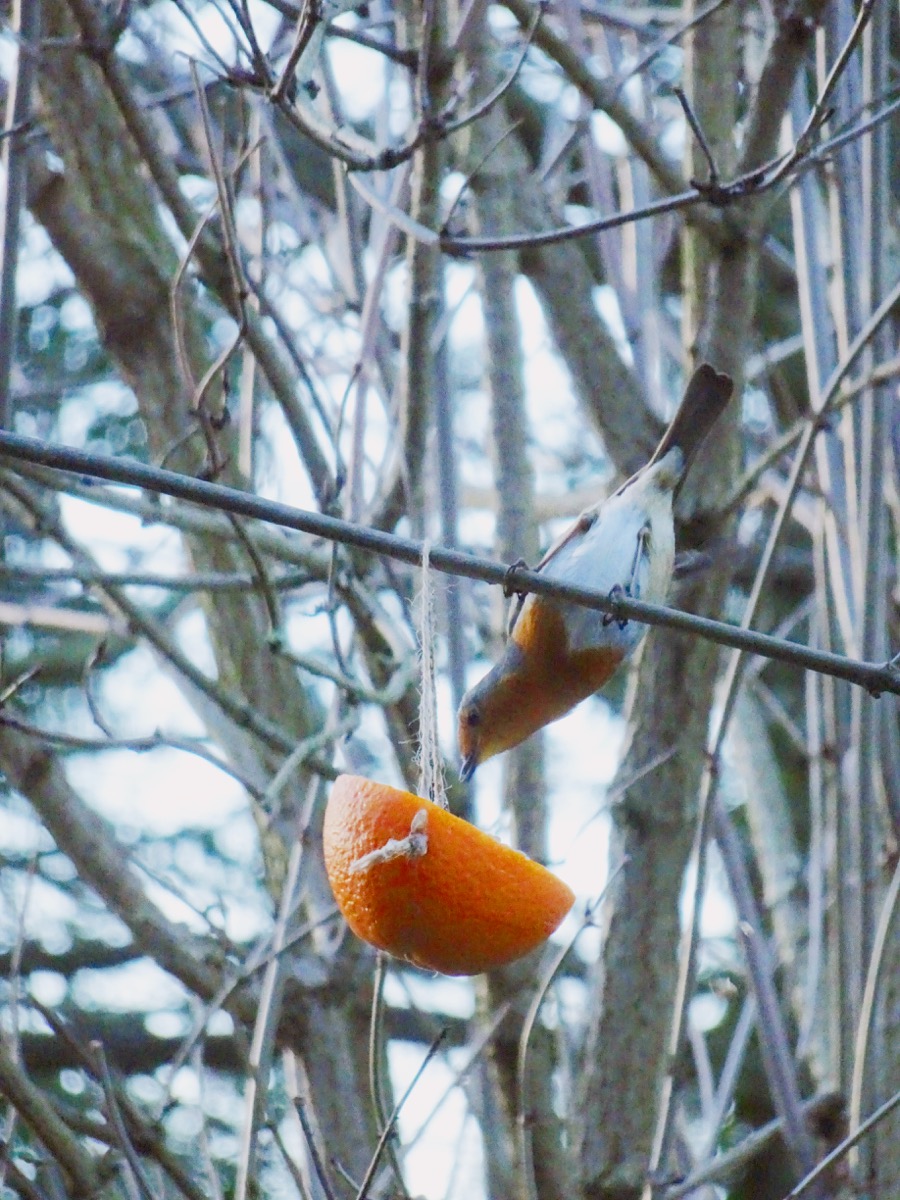
Making bird feeders. If you have children and haven’t done this yet, then this is the post for you to read today! 20 March is the first day of Spring and what better way than to celebrate this by celebrating the birds that are starting to build nests for their babies to come. They’ll be needing energy coming out of Winter especially for all the busyness that the next two seasons bring.
Making bird feeders is a really lovely activity for you and your children to do together. It is simple, easy and really rewarding watching the aftermath tucked up inside, while the birds outside enjoy your work. It is a wonderful route in to talking to your children about garden wildlife, their needs from season to season and simply getting them connected to nature.
It is however really important when deciding to feed wildlife, that you do so correctly and consider certain aspects of it. Some of the most important things to think about are:
- is it safe for your children to feed them,
- is the food safe for the animals to eat
- making sure that, in this case the birds do not become too reliant on your offerings.
To get you started here are two lists of foods that are safe and unsafe for birds to ingest.
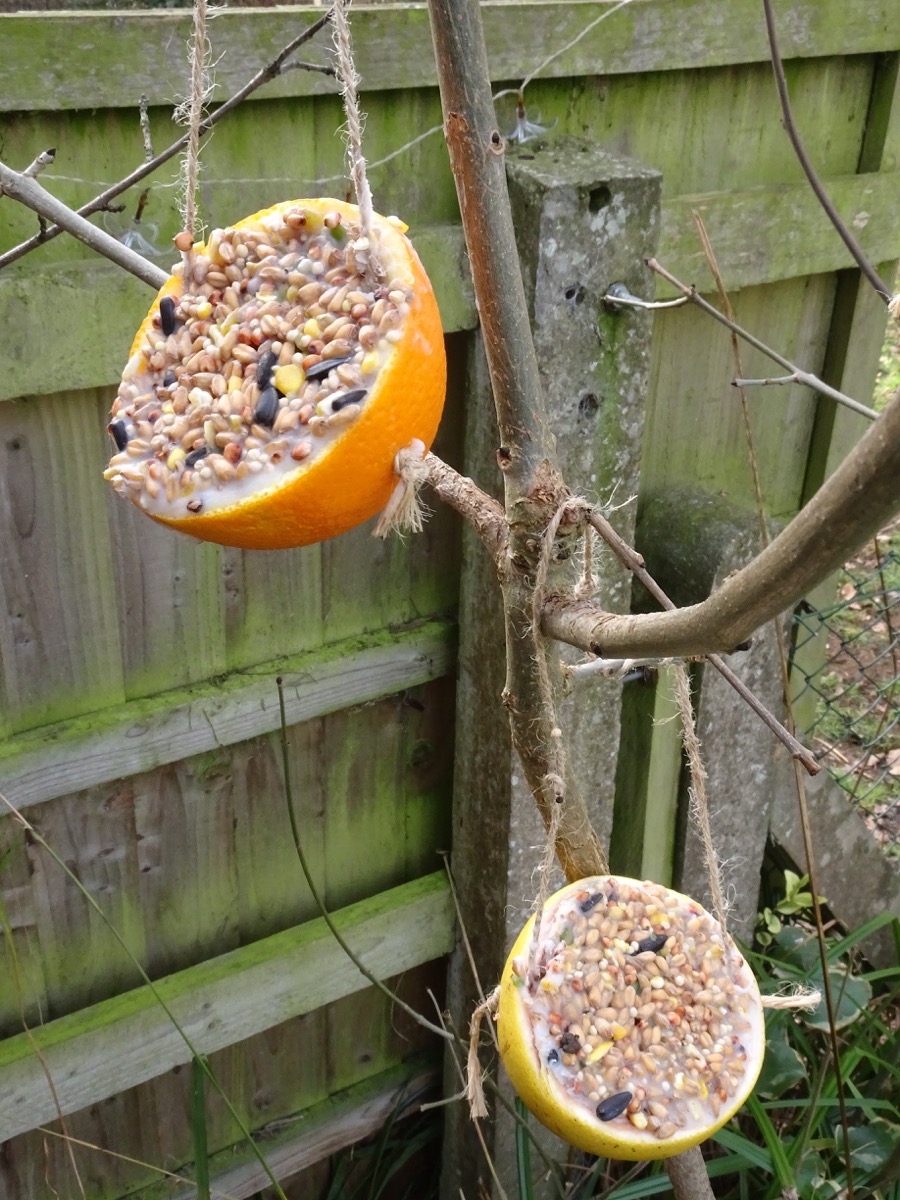
Do Feed:
- Plain Peanuts; in Springtime, place them in wire feeders so the birds don’t take larger pieces which baby chicks could choke on. Alternatively just make sure they are chopped up into smaller pieces. Be sure that your peanuts have no aflatoxin in them as this is a natural toxin that can harm birds. Always buy from a reputable brand.
- Nyer seeds; high oil and fat content
- Black Sunflower kernels; great all year round seed and black ones have more oil content in them.
- Cooked rice; with no added salt. Birds in any season will eat this.
- Uncooked porridge oats
- Apples & pears, whole, chopped up, even a little mushy is fine.
- Dried fruit; raisins, currants and sultanas. In Spring soak them.
Note: These are highly poisonous to dogs and cats so keep them out of reach if you have these pets. - Soaked brown bread; crumbled into small parts to prevent baby birds from choking on them.
- Mealworms; make sure they are fresh and not dead or discoloured otherwise this can lead to salmonella poisoning.
- Fat balls – Lard or Suet are excellent winter food. Make sure to remove the mesh bags them come in if you are buying them ready made.
- Fresh coconuts with coconut water cleaned out of it to stop black mildew. Throw away when it starts to mould.
Don’t Feed:
- Cooked meat fats; not good for birds feathers, they’re too salty and can also be a breeding ground for bacteria.
- Polyunsaturated margarines or vegetable oils
- Salt
- Milk; never give to any bird as their stomachs have no capacity to digest milk and this can lead to death. They can however eat dairy products like cheese as this is fermented.
- Mouldy food; some mould can lead to respiratory infections in birds. If your food is turning mouldy it means you are putting too much out and need to remove them and start to put out smaller portions.
- Desiccated coconut; it can swell up once ingested and cause death
Below is a really easy way to start feeding the birds that live around you. We guarantee your children will love watching them feed and you may even find that you have regulars who will become ‘your’ birds and friendly neighbours!
Spring Citrus Bird Feeder

What you will need:
- An orange or grapefruit
- Knife
- String
- Scissors
- Block of lard
- Bird seed from a reputable stock lister
- Microwave
- Spoon
- Skewer
Instructions:
- Cut your citrus fruit in half, making sure the top and the bottom of the fruit are each on their own half.
- With a sharp knife carefully cut around the edge of the rind and under, removing the flesh of the citrus.
- Scoop out any bits left in and put to the side.
- Repeat with the other side.
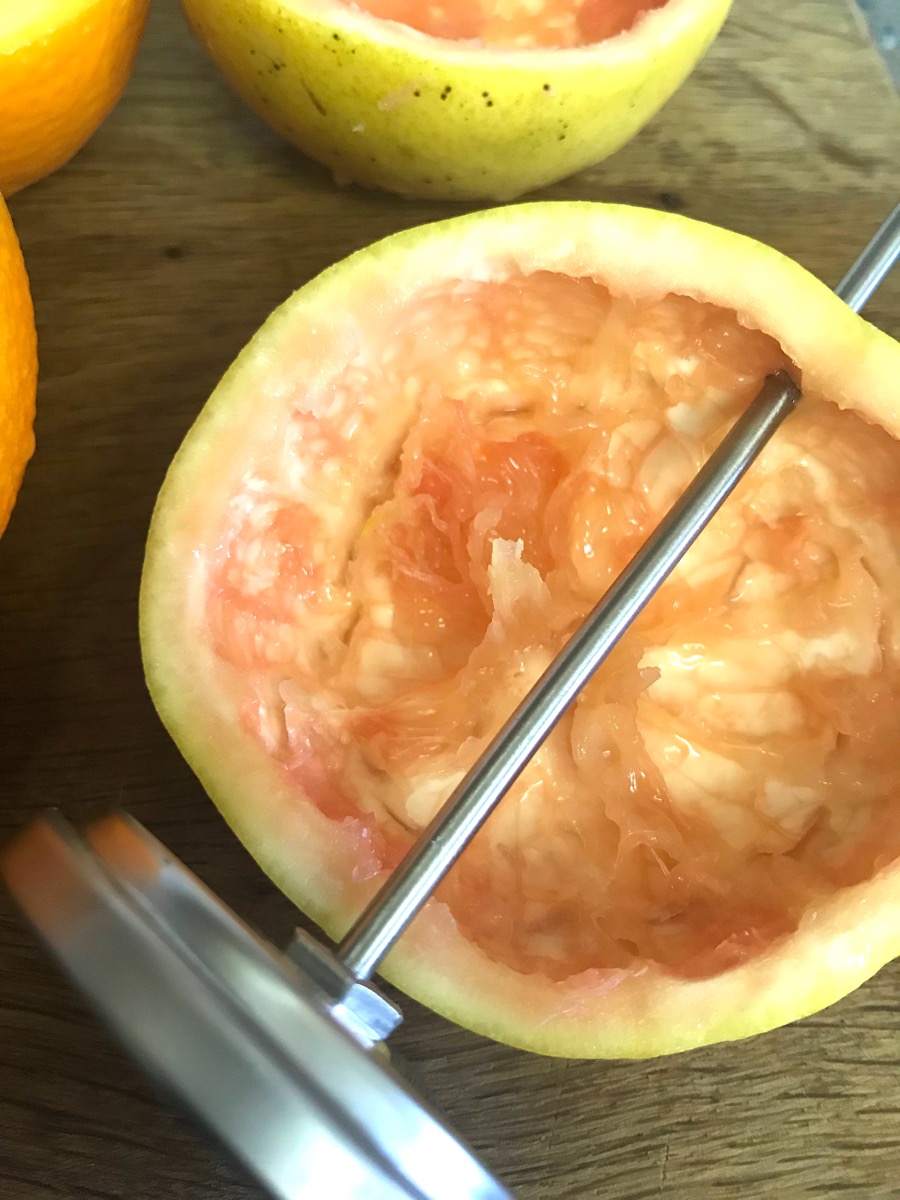
- Using your skewer, pierce a hole on opposites sides, a quarter of the way down.
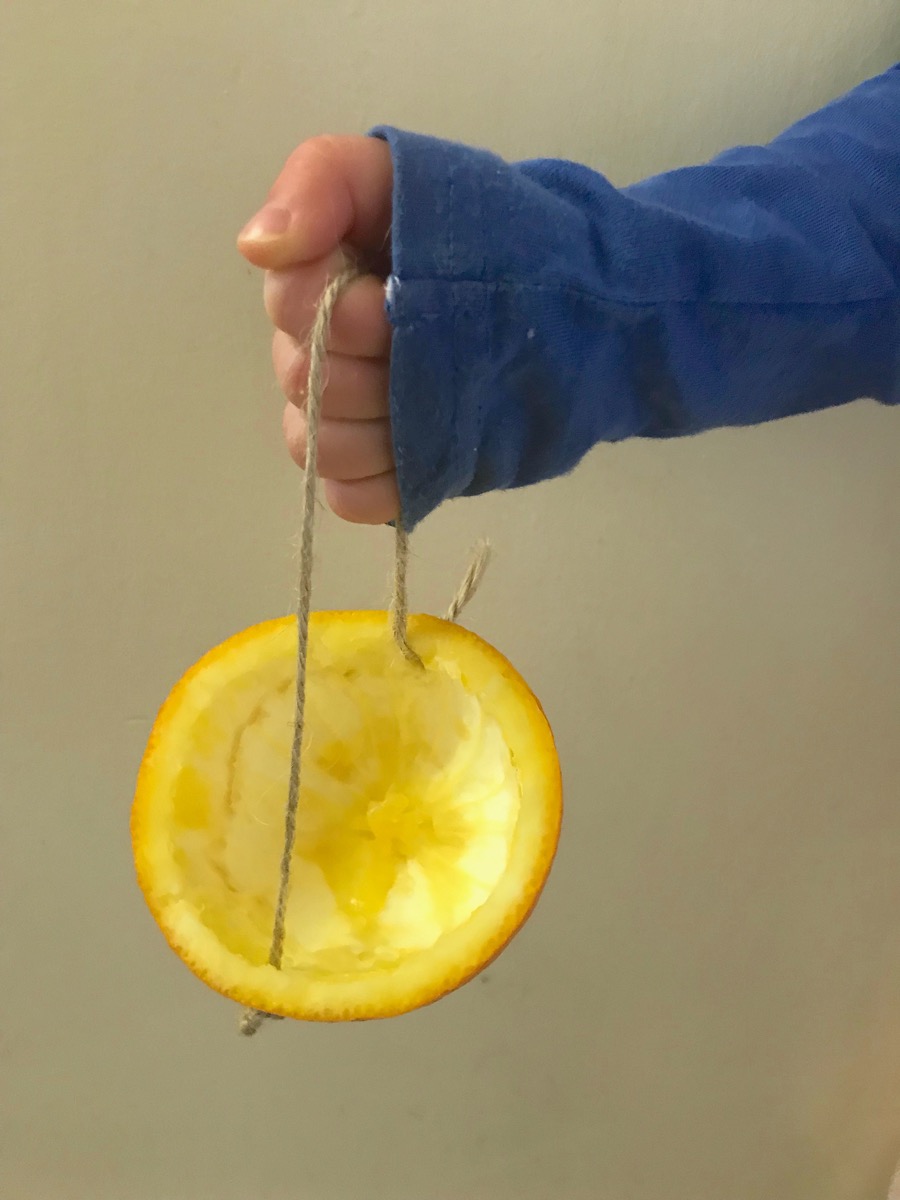
- Thread your string through each one and tie a knot at each end so that you have a V shape when you hold it up with the string.
- Repeat with the other side.
- Place your lard in a bowl and place in the microwave to melt it.
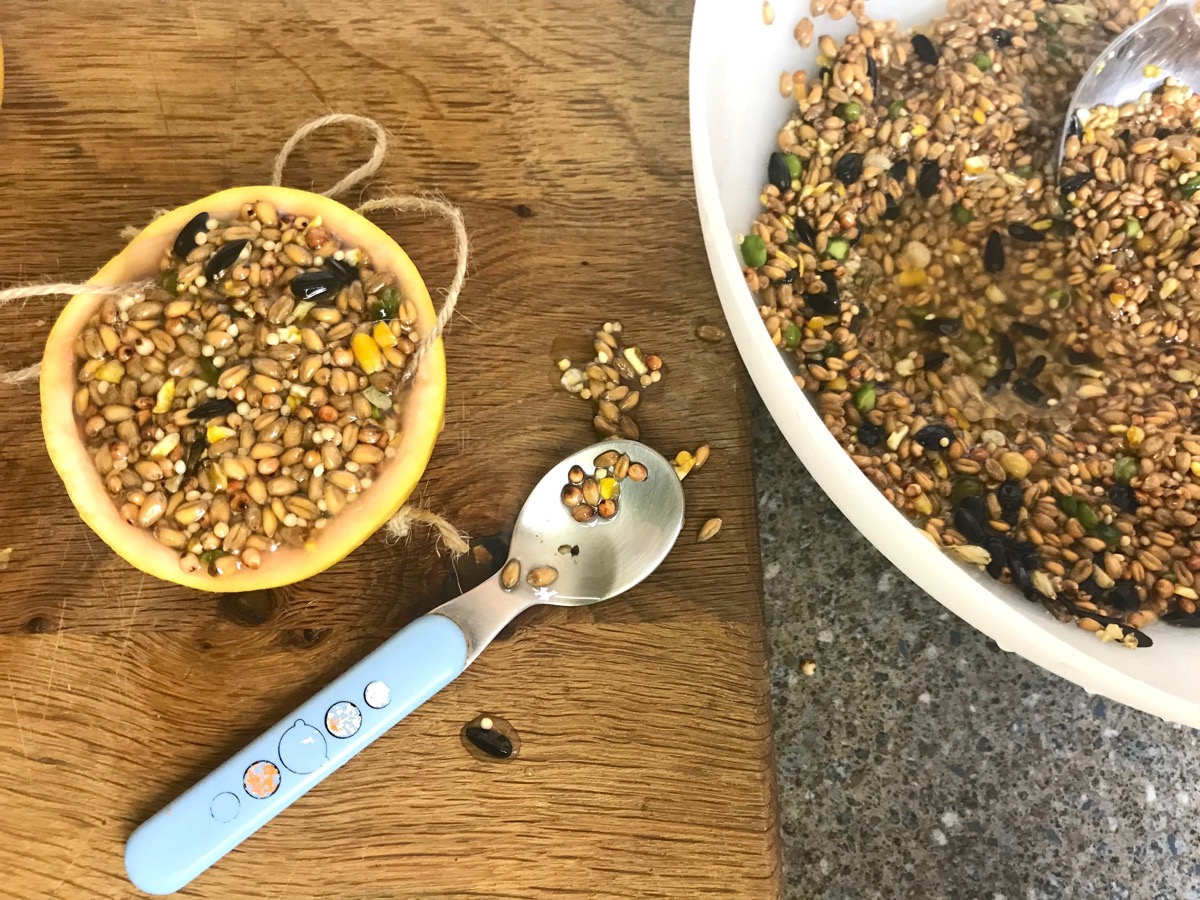
- Once melted pour in 200-300g of bird seed into the melted lard and mix until it is all combined and coated with lard. You don’t want your seeds to be swimming in lard, the majority of the lard needs to be absorbed. Get your children to help mix.
- Now allow your child to spoon the bird seed lard mixture into each side of your citrus fruit, showing them how to pat it down to compress it. Fill until it is parallel to the top of your fruit.
- Carefully place upright to the side so the lard can harden.
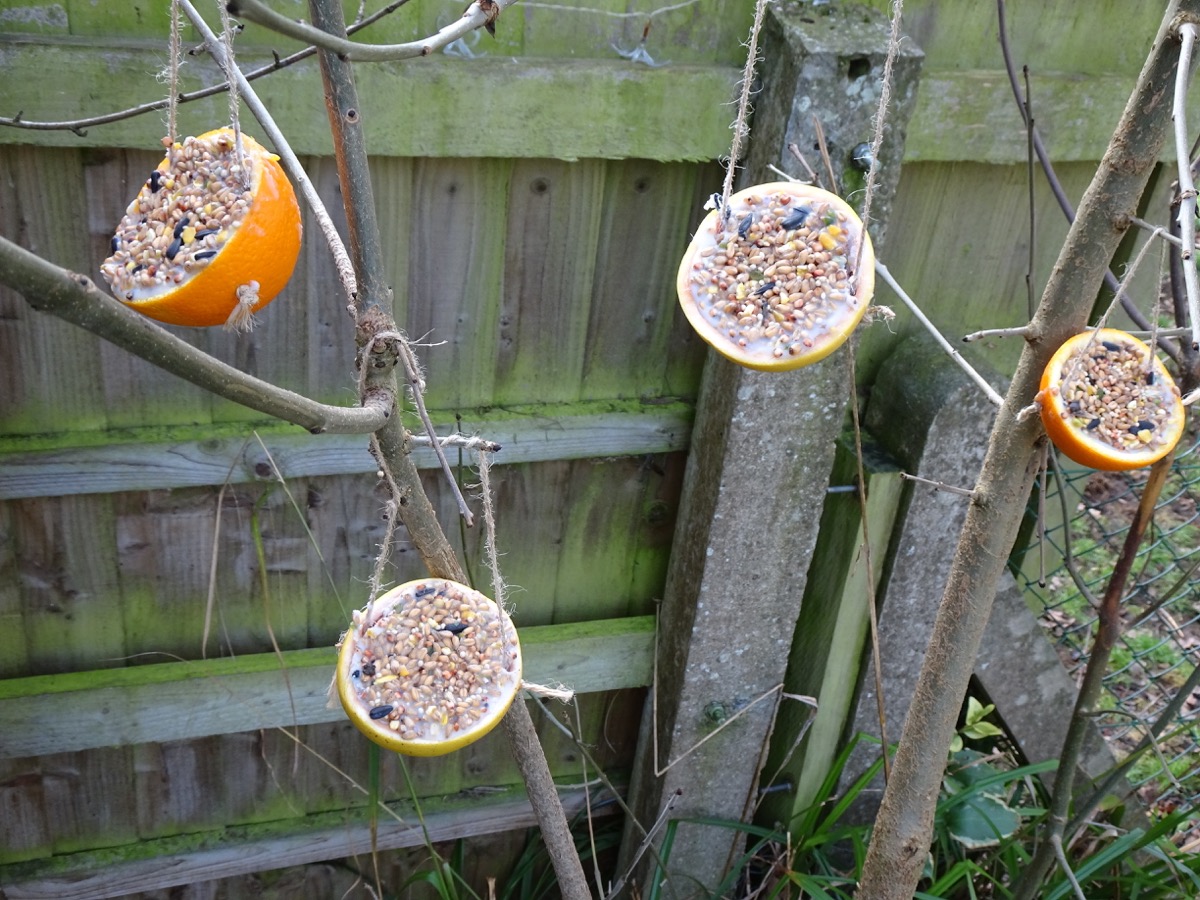
- Once hardened, find somewhere to hang them in the garden, or balcony.
- Stand back and watch the birds get all excited!
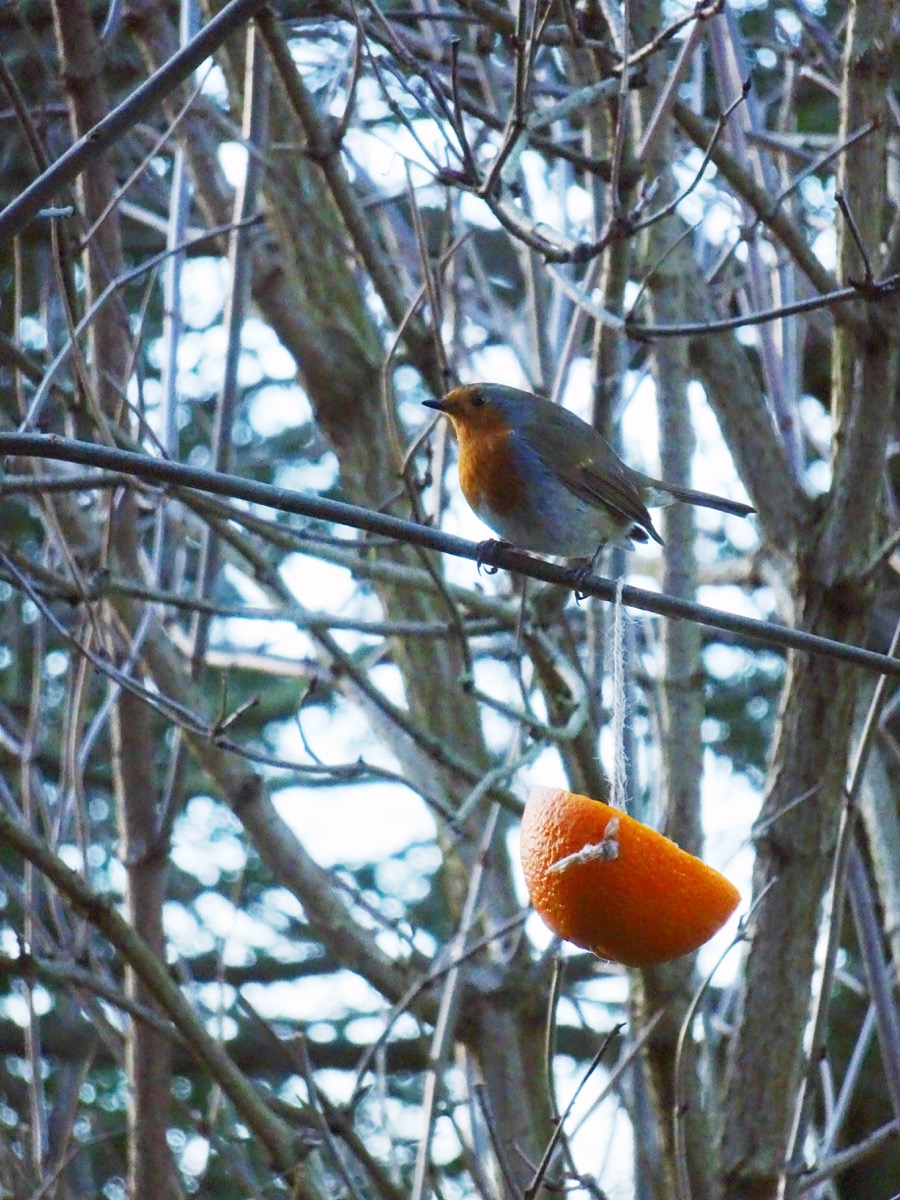

What you will need:
- An orange or grapefruit
- Knife
- String
- Scissors
- Block of lard
- Bird seed from a reputable stock lister
- Microwave
- Spoon
- Skewer
Instructions:
- Cut your citrus fruit in half, making sure the top and the bottom of the fruit are each on their own half.
- With a sharp knife carefully cut around the edge of the rind and under, removing the flesh of the citrus.
- Scoop out any bits left in and put to the side.
- Repeat with the other side.
- Using your skewer, pierce a hole on opposites sides, a quarter of the way down.
- Thread your string through each one and tie a knot at each end so that you have a V shape when you hold it up with the string.
- Repeat with the other side.
- Place your lard in a bowl and place in the microwave to melt it.
- Once melted pour in 200-300g of bird seed into the melted lard and mix until it is all combined and coated with lard. You don’t want your seeds to be swimming in lard, the majority of the lard needs to be absorbed. Get your children to help mix.
- Now allow your child to spoon the bird seed lard mixture into each side of your citrus fruit, showing them how to pat it down to compress it. Fill until it is parallel to the top of your fruit.
- Carefully place upright to the side so the lard can harden.
- Once hardened, find somewhere to hang them in the garden, or balcony.
- Stand back and watch the birds get all excited!





As always, tag us in your finished products we want to see them! Bonuses for those who catch photos with your birds feasting on them!
Don’t forget to follow us on Twitter, Instagram, Pinterest, and Facebook!
 Contributor
Contributor
Grace Selous Bull is an arts education author and freelance blogger. Her book, ‘Potty About Pots: arts and crafts for home and school’ is aimed at children from 5-12 years old and takes them through a journey of ceramics through time. She is a full time Mummy of two girls, both of whom love being creative, and is married to her husband, Andrew, who does not.
Original content © 2020 Super Simple. Not to be reprinted without express written permission. Terms of Service.

